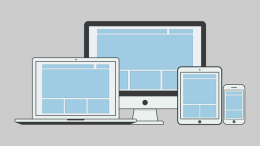Guest author Liraz Margalit, PhD, is a web psychologist at ClickTale, a company that provides website optimization software and consulting.
Smartphones and tablets both get us online, store our photos and keep track of our calendars. But they are not the same. In fact, user behavior varies quite a bit between the two.
While they’re both portable and sleek, and used to get online access when users are away from desktop computers, people have different mindsets around them.
See also: The Biggest Digital Marketing Mistakes Entrepreneurs Make
In the course of my job as a web psychologist, I’m deeply steeped in research, much of which reveals distinct and separate usage patterns. The smaller devices, which tend to be carried on our person, tends to inspire active engagement, while the larger tablets are often used more passively.
For tech companies and developers for each device category, it’s crucial to understand these differences. If people come to their devices with different goals, then approaches catering to them and appealing to them need to be distinct and carefully crafted as well.
A Tablet Is Not A Mobile
There’s a penchant in the tech community to consider tablet devices as nothing more than jumbo-sized smartphones. Sure, tablets could qualify as mobile devices, with their apps, email access and 3G connections. But lumping them together is a mistake, because they each occupy different purposes in the lives of end users.
When you own a smartphone and add a tablet to the mix, you don’t end up using your smartphone any less. If both of the devices filled the same purpose, usage time with one would cut into that of the other. But they don’t compete, because users come to their tablets and smartphones for entirely different purposes.
A 2014 Mobile Behavior Report showed that only 14 percent of consumers associate the word “mobile” with their tablets and e-readers, despite their portability and wireless Internet access. So while our smartphones are in our pockets and bags, always at the ready, our tablets tend to be in-home devices.
The larger screen may seem ripe for productivity—and in some cases, if that’s the purpose driving the purchase, they may be—but don’t expect all (or even most) tablet users to actively engage them. Mobile phones travel with us, and we use them with a “goal-oriented” state of mind. Tablets, on the other hand, are considered more stationary and at-home and we use them with “browsing” state of mind. Usage of the larger device tends to be more passive, because people associate them with watching videos, movies and reading.
So, for instance, demanding active behavior such as registration or entry of personal details may cause your potential tablet customers to ditch your page or app all together.
Tablets And Buying Behavior: More Like Computers Than Phones
ClickTale’s extensive analysis of customer behavior on the websites of leading enterprises including Wal-Mart and North Face has shown that purchase behavior also varies widely between mobile, tablet and desktop.
Customers love to use their portable devices for browsing, “window-shopping” and pre-purchase activities such as price comparison. When it comes to actually whipping out their credit cards and closing the sale, however, desktops or laptops are still overwhelming the machines of choice, with tablets coming in second.
There’s a psychological explanation for this. Our smartphones are the most intimate of our devices—they sit on our body; they are stroked with our fingers; they know the most intimate details of our lives and schedules. Desktops sit away from us, however. They feel much more separate and distinct. They don’t travel with us, and to access the screen we use a mouse, not our fingertips.
Here, too, tablets differ from phones by virtue of their in-home usage. People often think of them as a sister of the desktop computer, rather than the smartphone, which situates them somewhere in between the two.
Purchases on desktops, our analysts have found, tend to fall in the functional category—clothing necessities, for example, and essential non-luxury items. On mobiles, however, purchases are significantly more emotional: a last-minute re-booked flight from an airport departures lounge, for example, or a novelty item that restaurant companions discovered on their phones and decided, on a whim, to splurge on.
Tablets, like their function, fall in the middle ground. Tablet customers are motivated by both emotion and sensation. These purchases are not the necessities bought on desktops, and they aren’t impulse buys like those on smartphones. Tablet shoppers tend to take their time and let items sit in their cart before pulling the trigger and eventually buying.
Whether they realize it or not, people have developed specific mental schemes around these gadgets. It takes more than one-size-fits-all features and strategies to succeed in this multi-device (and multi-platform) age. In development and marketing, you need to consider the unique place that each occupy in people’s lives. Tailor your efforts for the device at hand, and you will find that users will be significantly easier to reach.
Lead photo by Clemens Löcker





















